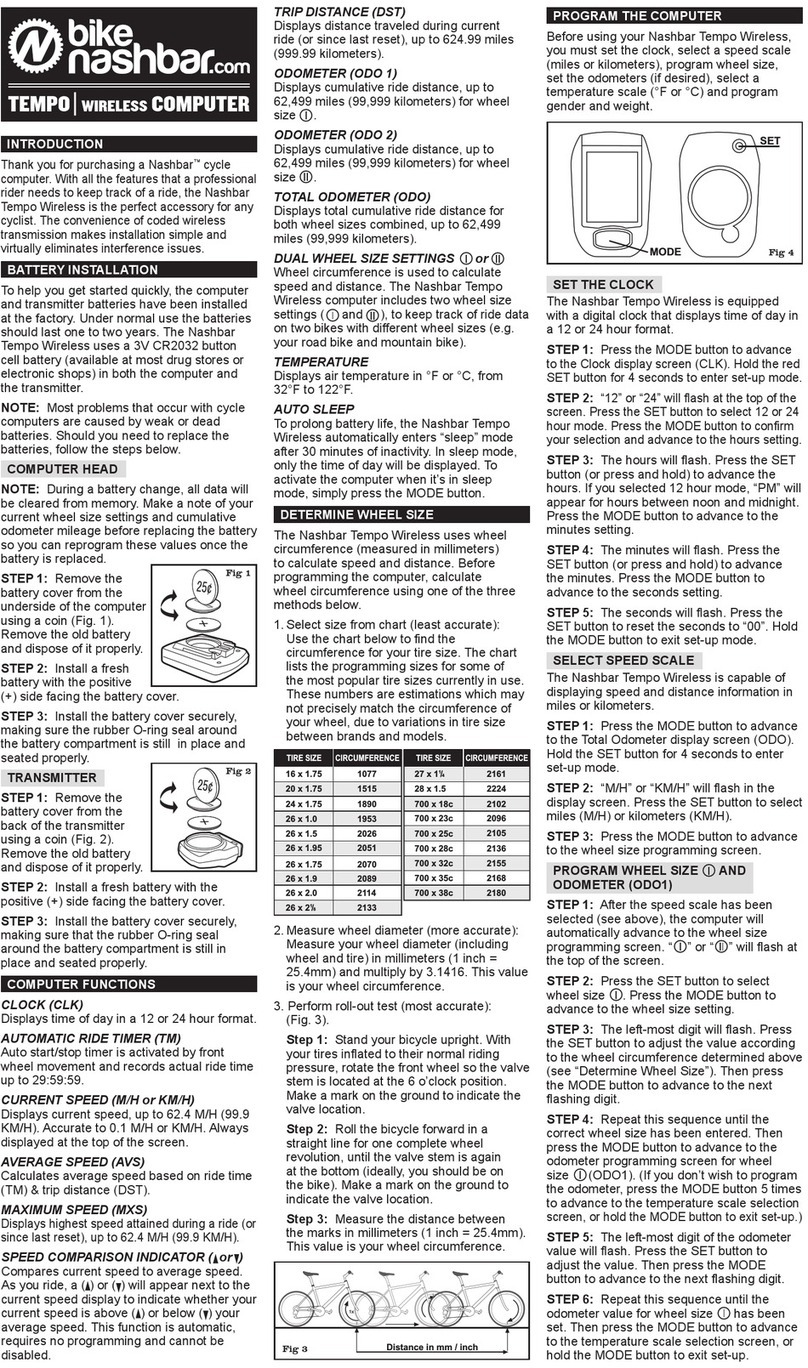
Thank you for purchasing a pair of Nashbar™pedals. The cleats supplied with these pedals work with all
cycling shoes with a 3-hole drilling pattern on the sole.
TOOLS NEEDED:
8mm hex wrench, 3mm hex wrench, 4mm hex wrench
PEDAL INSTALLATION:
Alpe D’Huez road pedals have 9/16" threaded axles. The right pedal (marked R) is installed in a clockwise
direction. The left pedal (marked L) is installed in a counterclockwise direction.
1. Grease the axle threads prior to installation.
2. Use an 8mm hex wrench to install and tighten the pedals. Tighten to a minimum of 300 inch/lbs. of
torque.
CLEAT ATTACHMENT:
These pedals include a grey cleat with 4.5˚ of rotation. Left and right cleats are identical.
1. Lightly grease the bolts and insert them through the rectangular washers. Place the solid black surface
of the cleat against the sole of the shoe.
2. Insert a bolt and washer into one of the recessed rectangular cleat openings. Tighten enough to hold
the cleat in place. Repeat for all bolts and washers (see Figure 1).
3. Center the cleat under the ball of the foot (see Figure 2) by sliding the cleat forward or rearward along
the cleat mounting slots. The cleat can also be adjusted a few millimeters from side to side.
4. Tighten the cleat bolts securely with a 4mm hex wrench.
5. Cleat position can be ne-tuned during test rides by loosening the cleat bolts, repositioning the cleat,
and retightening the cleat bolts.
6. Once the desired cleat position is obtained, ensure the cleat bolts are tightened securely.
BINDING TENSION ADJUSTMENT:
1. Binding release tension is adjustable and is initially set at the lightest tension setting. Minimum binding
tension settings are recommended for novice riders and for riders in situations requiring frequent cleat
release, such as on difcult terrain or in heavy trafc. Higher tension settings are recommended for
experienced riders and for riders in situations where accidental release would be dangerous, such as
hard acceleration (sprinting).
2. Locate the binding tension adjustment bolt on each pedal (see Figure 3). If the tension adjustment is too
low, allowing the cleat to release from the pedal too easily, turn the tension adjustment bolt clockwise
to increase the tension. If the tension adjustment is too high, preventing the cleat from releasing easily
enough, turn the tension adjustment bolt counterclockwise to decrease the tension (see Figure 3).
Increase
3mm
Decrease
Tension
Adjustment
Bolt
ALPE D’HUEZ ROAD PEDAL
• These pedals are not designed for use on any type of indoor excercise bicycle or equipment.
• Before attempting to ride with these pedals, make sure you understand how to release your shoes
from the pedals. Apply the brakes, place one foot rmly on the ground, and practice engaging and
releasing each shoe from its pedal until you can do so naturally and with minimal effort. Ride on
level ground in a trafc-free area at rst, until you become adept at engaging and releasing your
shoes from the pedals.
• Adjust binding tension for comfortable release force. Minimum tension settings are recommended
for riding on difcult terrain or in trafc.
• Ensure that cleats and pedals are free of debris. Inspect and tighten cleat bolts after the rst use
and frequently thereafter.
• Check cleats for wear before every ride. Cleats that are badly worn may impair release or cause
unexpected release from the pedals, and should be replaced. Readjust binding tension after
changing cleats.
For Technical support, call 1-800-888-2710 0113_1 NB-ALPE Made in Taiwan
Fig 1
Fig 2
Fig 3
WARNING






















